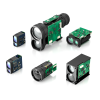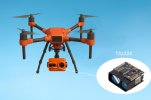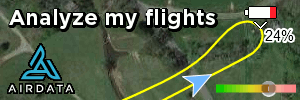Hi pilots,
I wanted to share some thoughts on laser rangefinder modules and how they can be used on drones. As UAVs are taking on more complex tasks – from aerial mapping to search and rescue – having accurate distance measurement is becoming more important than ever.
I wanted to share some thoughts on laser rangefinder modules and how they can be used on drones. As UAVs are taking on more complex tasks – from aerial mapping to search and rescue – having accurate distance measurement is becoming more important than ever.
What Is a Laser Rangefinder Module?
A laser rangefinder module is a compact sensor that measures the distance between the UAV and an object or the ground using laser pulses. Modern modules are lightweight (around 10g), very compact, and can measure distances up to several kilometers with meter-level accuracy. Most modules use 905nm Class 1 eye-safe lasers, meaning they are safe to operate while providing strong performance outdoors.Why Use One on a Drone?
- Altitude Measurement
A laser rangefinder gives accurate readings of the drone’s height above ground level. This is useful in low-altitude flights, crop spraying, or terrain-following missions where GPS alone isn’t precise enough. - Obstacle Detection
Mounted on the front or bottom of a UAV, the sensor can detect nearby obstacles such as trees, power lines, or buildings, helping the drone avoid collisions. - Mapping and Surveying
For aerial mapping or inspection, long-range laser modules (up to 2000m) allow drones to measure distances to terrain features or tall structures with high reliability. - Search and Rescue
In emergency scenarios, a drone equipped with a rangefinder can measure distances to cliffs, slopes, or objects in difficult terrain, assisting teams in planning safe operations. - Industrial Applications
Drones used for inspecting transmission towers, wind turbines, or pipelines benefit from precise distance data, ensuring they can maintain safe and consistent flight paths.
Advantages for UAV Integration
- Compact and Lightweight – easy to mount on small drones without reducing flight time.
- Rugged Design – often built with metal housings, suitable for outdoor missions.
- Wide Temperature Tolerance – can handle extreme environments from hot summers to cold winters.
- Low Power Consumption – efficient enough to run on typical UAV power systems.












